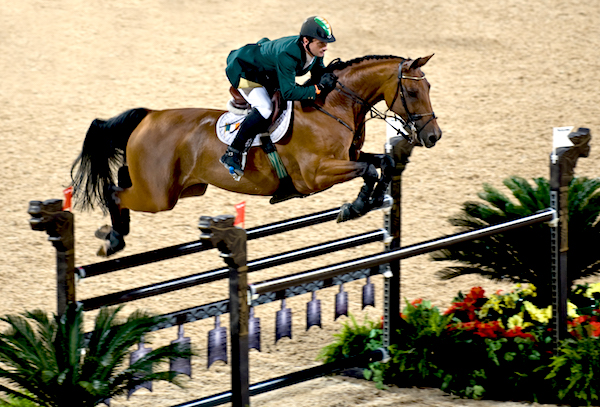All About Equestrian
So many Olympic events are enjoyable because of how they reduce sport down to its essential elements — who can run faster, lift more, throw farther, etc. Equestrian bucks (pun intended) that trend. There’s nothing reductive about precisely prancing around or leaping obstacles on a horse. And because of that, in the midst of all the simple events, equestrian counter intuitively becomes a complicated relief to watch.
How Does Equestrian Work?
Equestrian events are split into or contain three separate disciplines of horse riding. In dressage, riders perform a set of movements with their horse on a flat surface with no obstacles in sight. Some of the required movements are the piaffe, “a calm, composed, elevated trot in place,” the half-pass, “where the horse goes on a diagonal, moving sideways and forward at the same time” and a pirouette. Dressage is also known as “horse ballet” which gives you a feel for what it looks like. The second discipline is jumping. In jumping, horses and riders must clear a series of obstacles on a course. Runs through the jumping course are timed and many of the barriers are set up with a set of horizontal bars so that if the horse doesn’t completely clear it, a. no one dies and b. each bar that gets knocked down can be converted into a time penalty which gets added to the time of the run to create a score. The final discipline is cross-country which is basically jumping but on a longer, more naturalistic course with barriers that don’t have bars on them. You either get over them or you don’t.
Why do People Like Watching Equestrian?
Each equestrian discipline has its own appeal. In dressage, the synchronization between horse and rider is astounding. It’s like watching sychronized swimming if half the team was a different species! Jumping promises suspense because you and the rider in question often know before they start, exactly what they need to do to succeed. The cross-country is a more high-speed thrill with riders and horses moving at full tilt.
Check out some highlights from the 2012 Olympics:
What are the different events?
Dressage and jumping each have team and individual events. In team events, each country is limited to four riders and the bottom score is dropped from each team. In individual events, riders get three cracks at it and take their best two scores. The third event is called, believe it or not, eventing. It’s a combined event with a dressage, a jumping, and a cross-country competition.
How Dangerous is Equestrian?
Any time you get on the back of a beast that’s bigger than you, there are inherently some dangers involved. When you also endeavor to do crazy things on the back of said beast, it gets more dangerous! Still, at this level, accidents rarely happen.
What’s the State of Gender Equality in Equestrian?
Whoa! Equestrian is the one Olympic event where men and women compete against each other. Cool!
Links!
Bookmark the full Olympics schedule from NBC. Equestrian is from Saturday, August 6 to Friday, August 19.
Read more about equestrian on the official Rio Olympics site.

